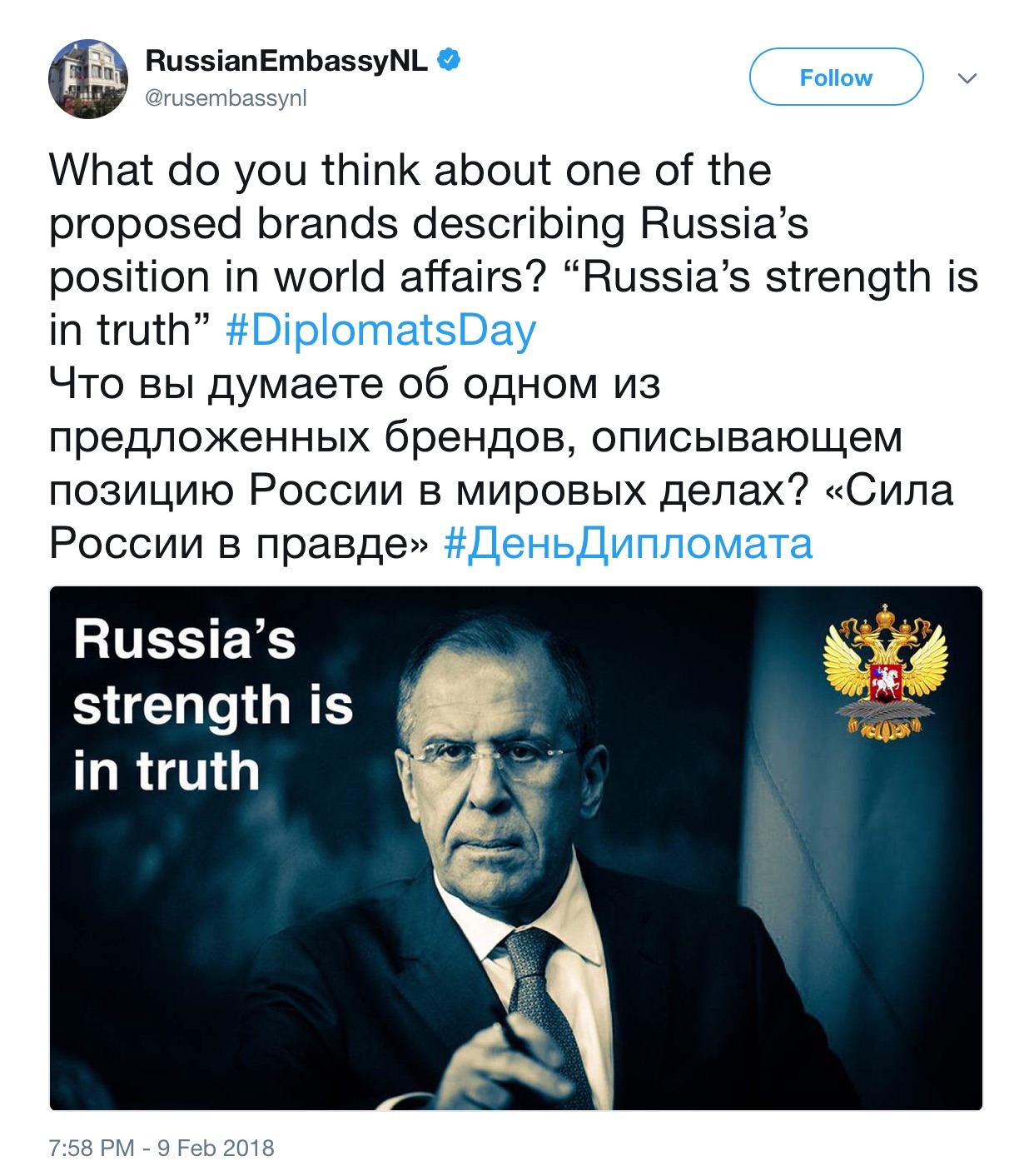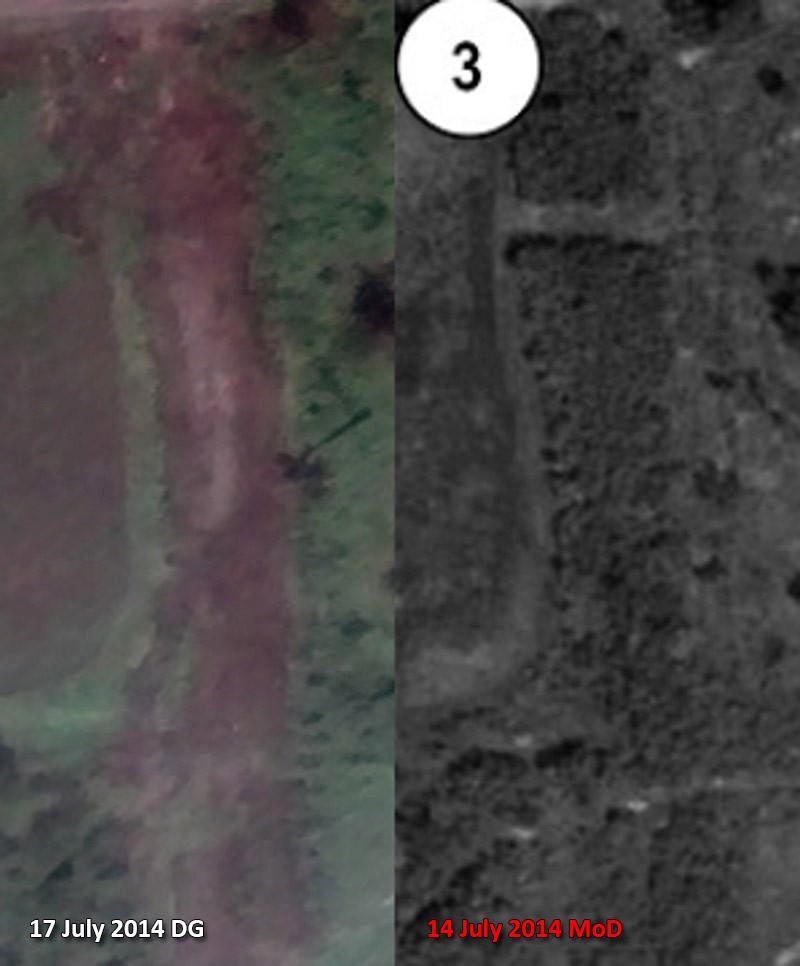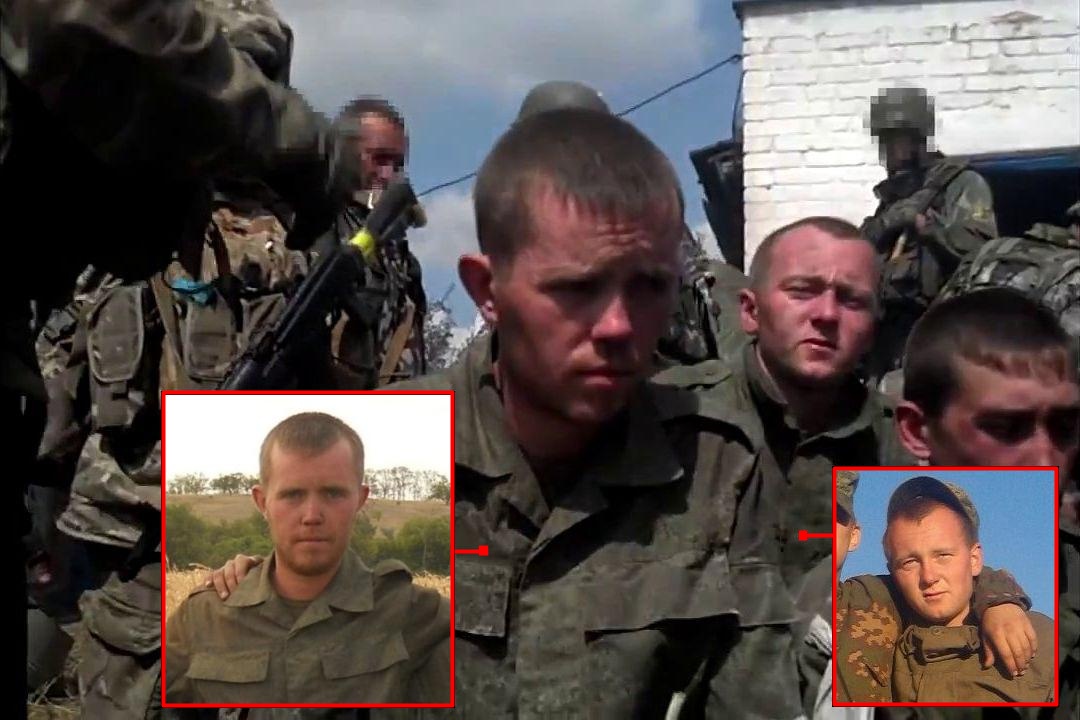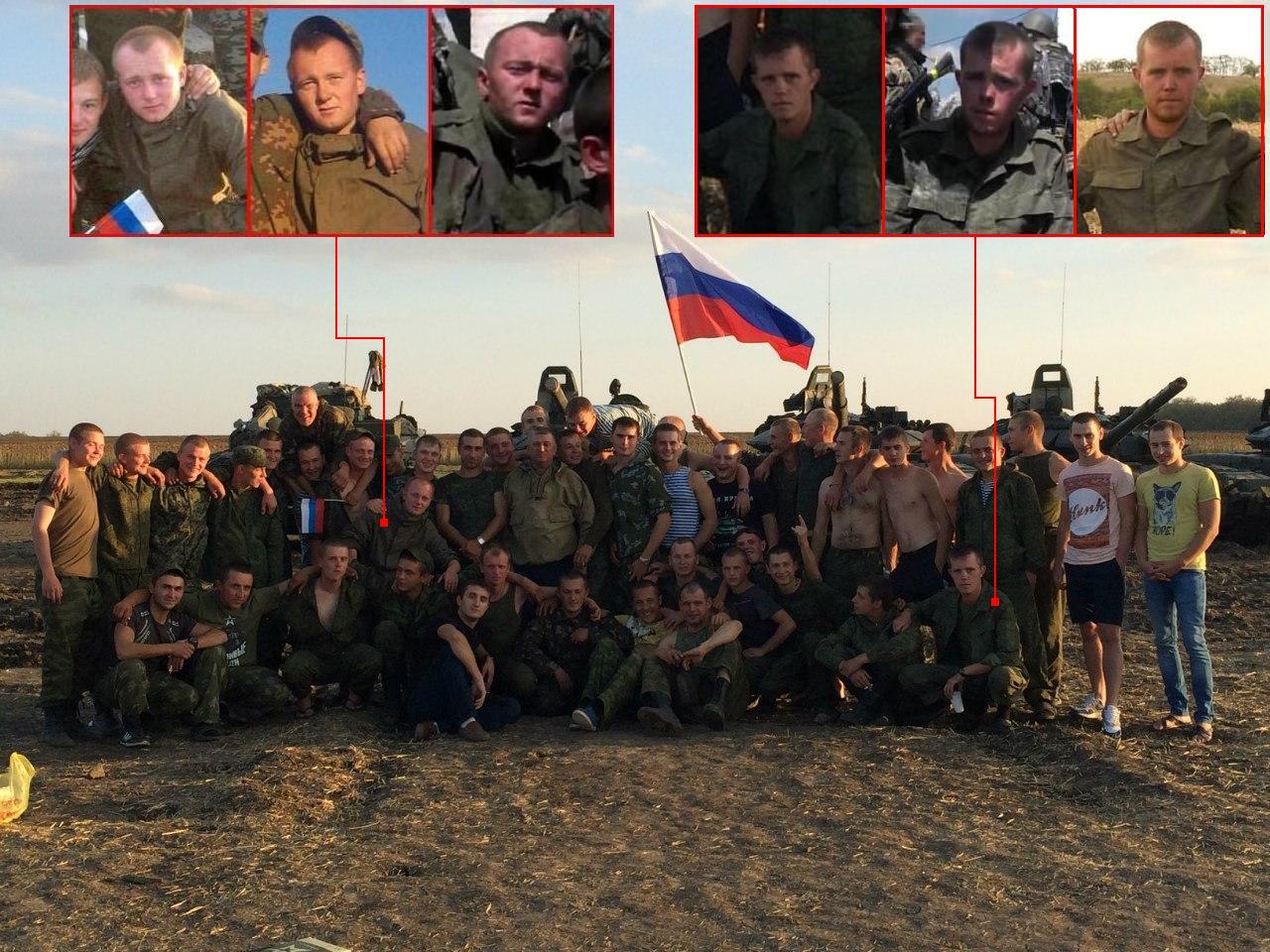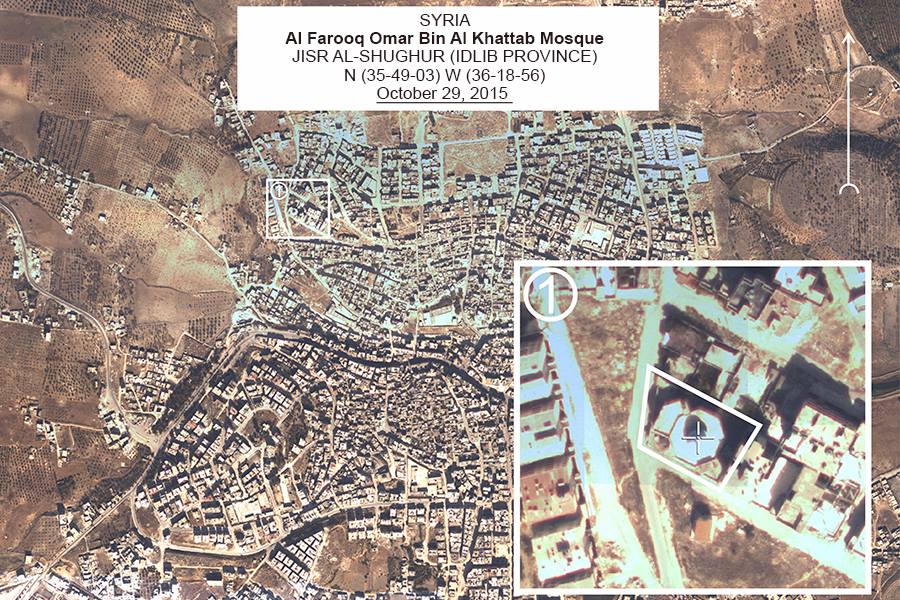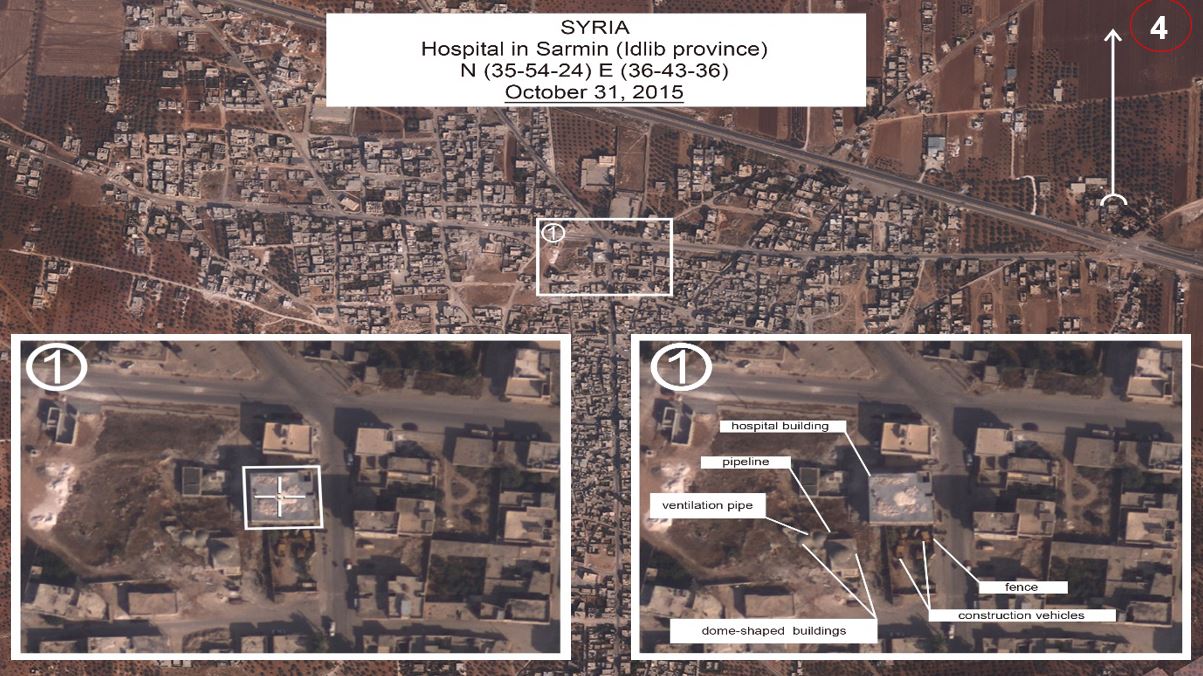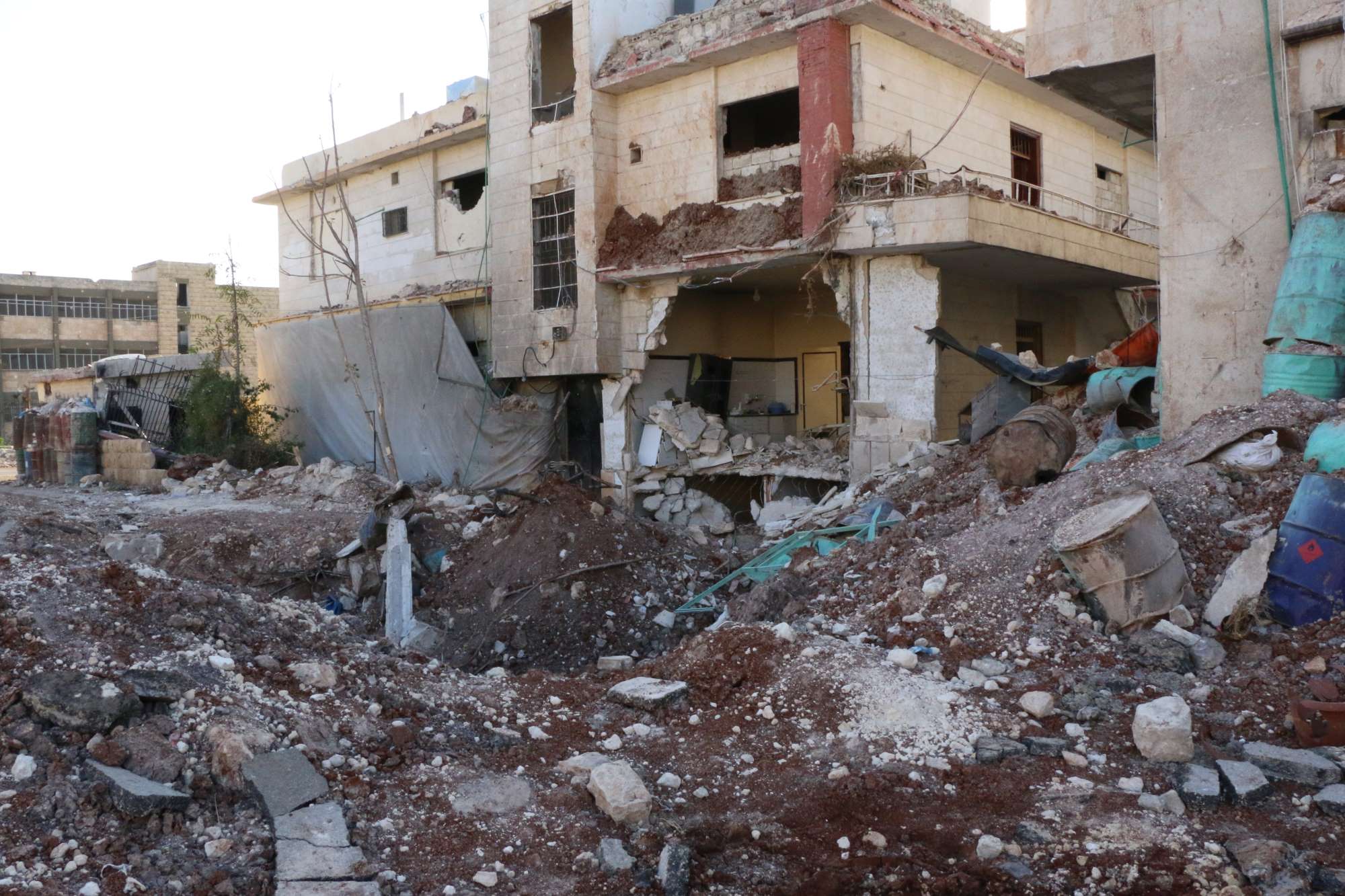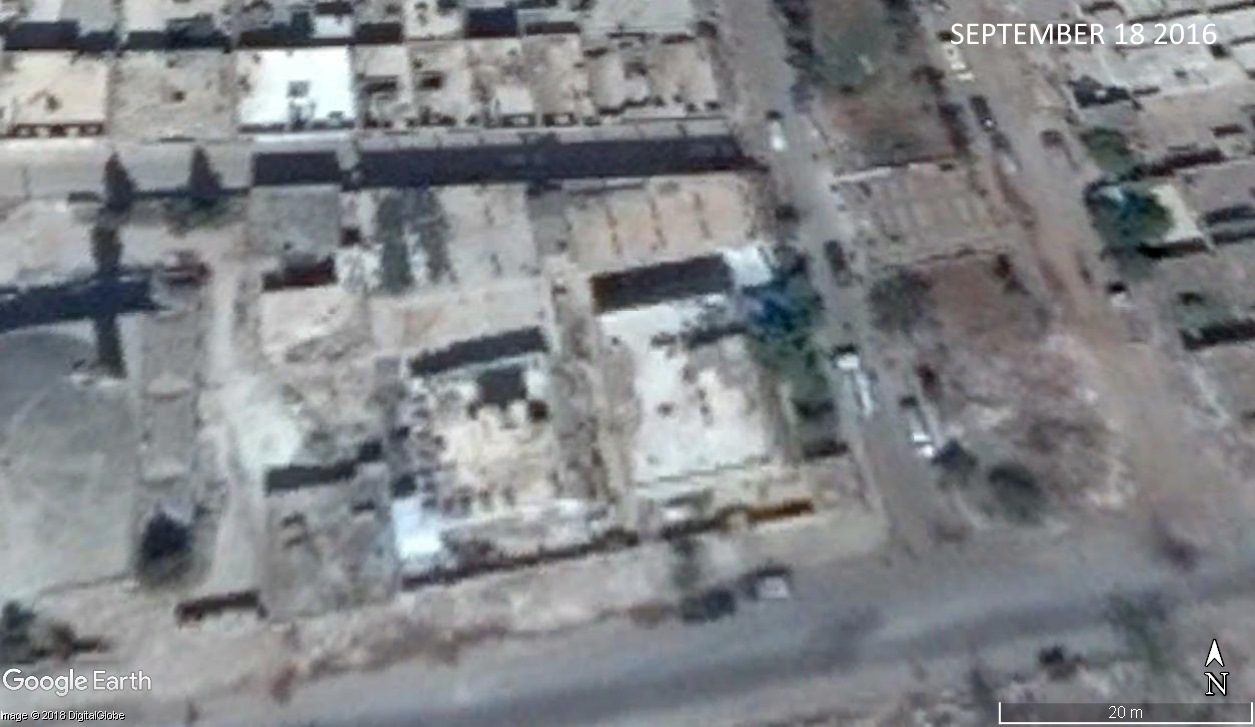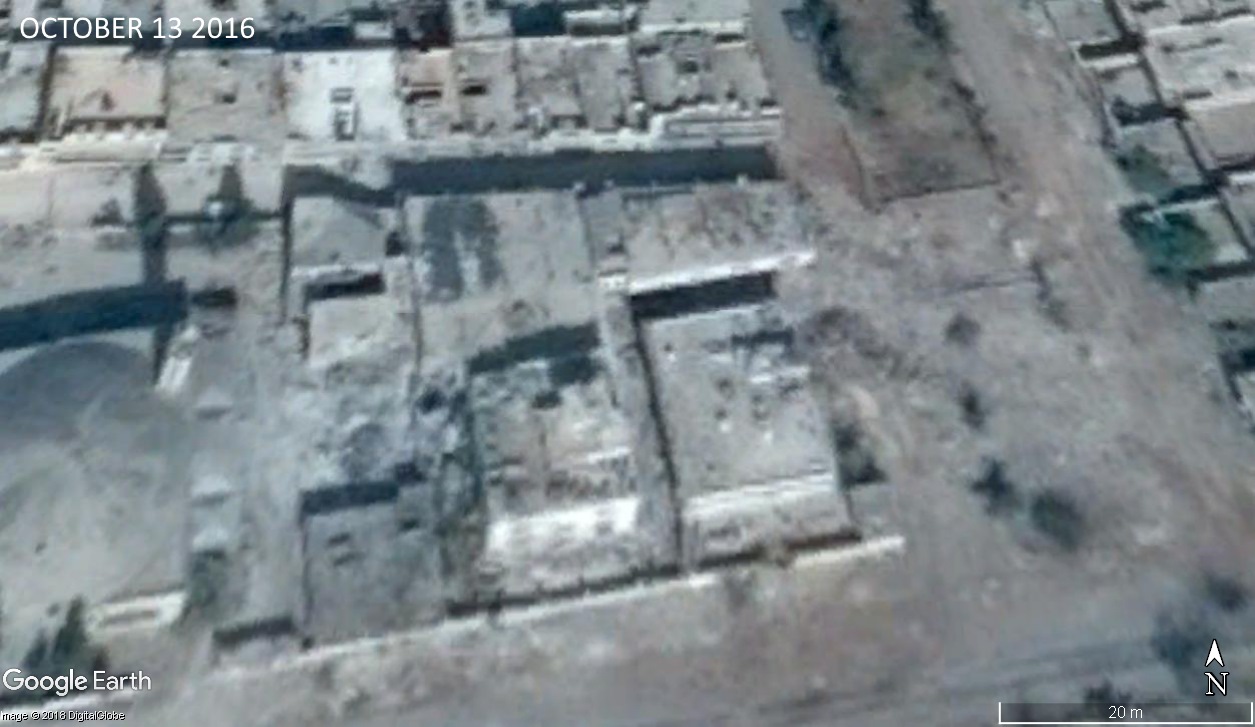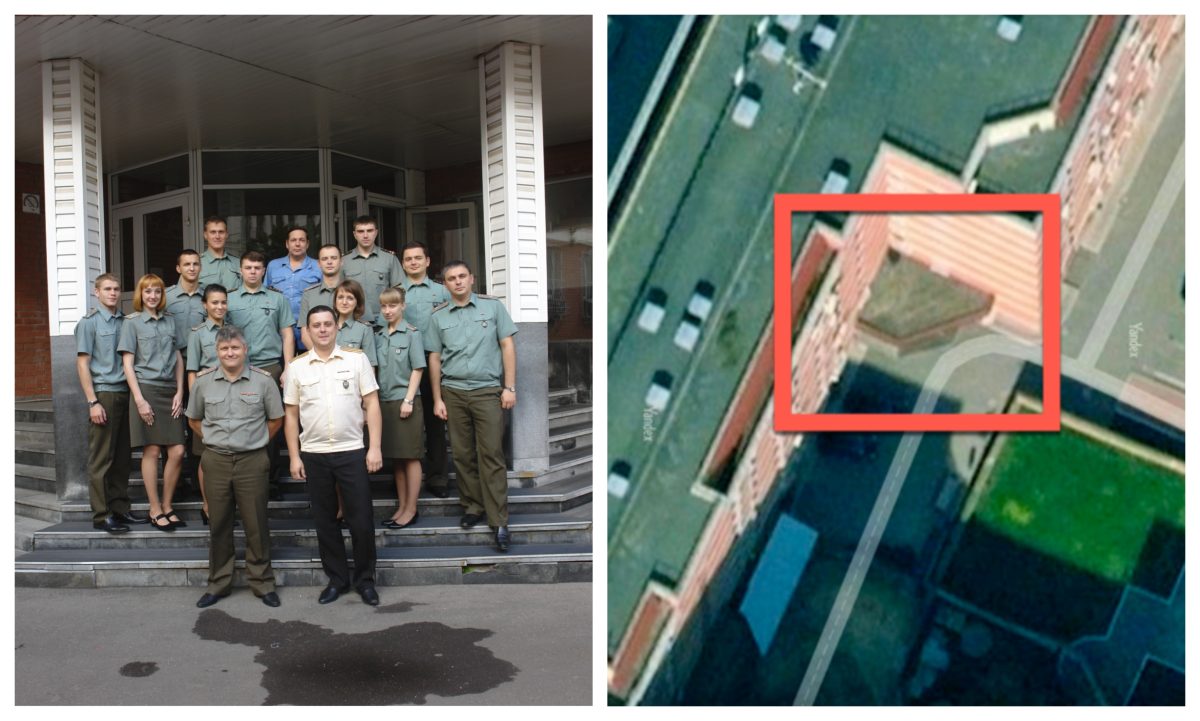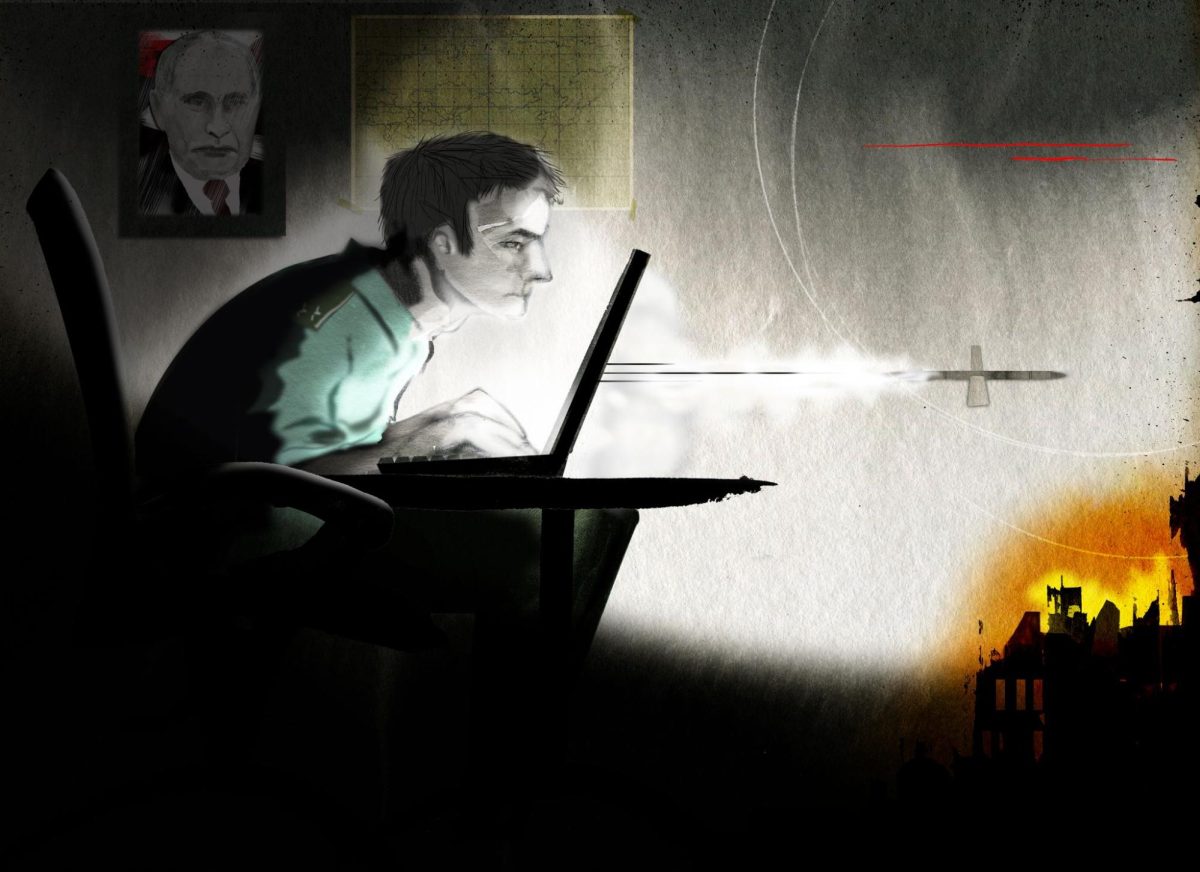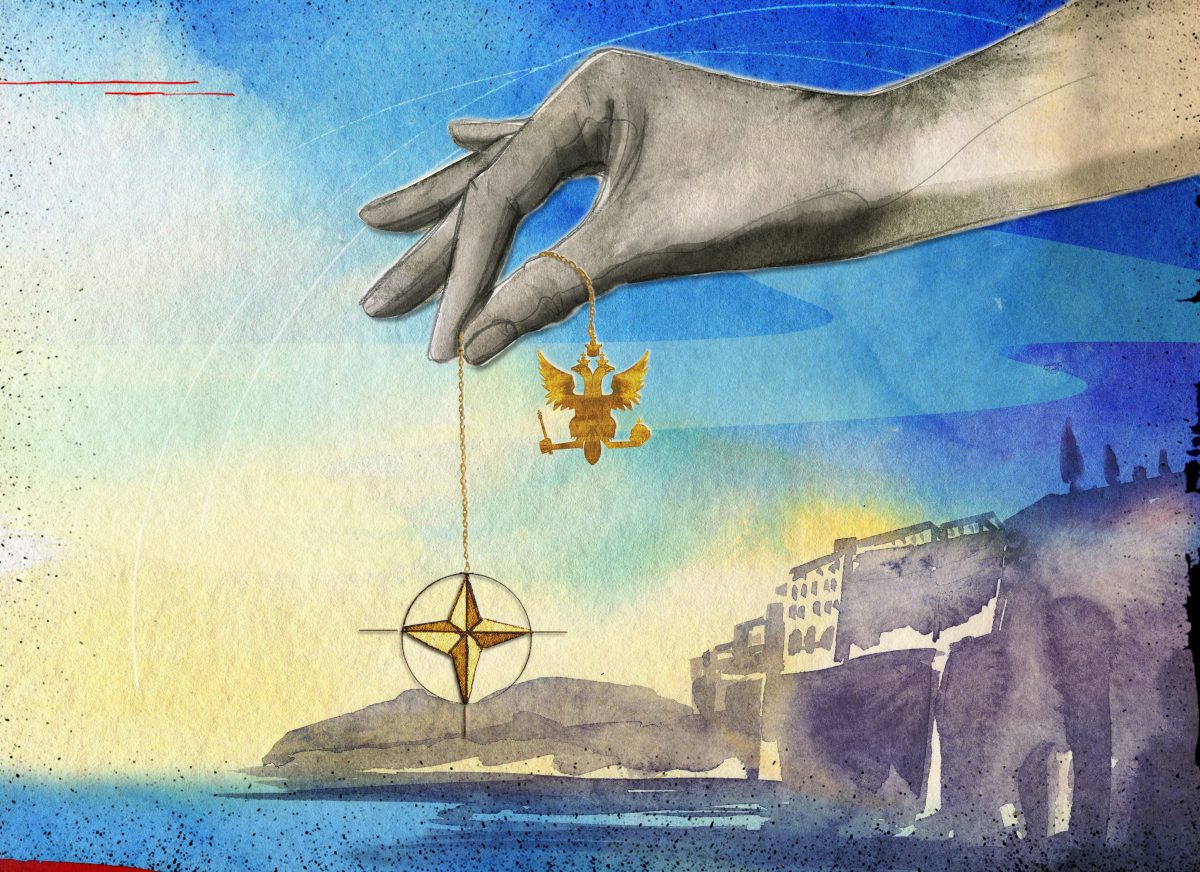The Truth Behind the Russian Embassy to the Netherlands' "Russia’s Strength is in Truth" Branding Proposal
On February 9 2018 the Russian Embassy to the Netherlands tweeted their suggestion for a brand “describing Russia’s position in world affairs”:
It’s unclear if this was an attempt at humour, as in world affairs it would be fair to say Russia’s greatest weakness is in truth, as the work of Bellingcat and others has repeatedly caught Russia lying about world affairs. The Russian Embassy of the Netherlands’ idea is particularly egregious in light of the Russian government’s repeated lies over the downing of Malaysian Airlines Flight MH17 in Ukraine on July 17 2014, resulting in the deaths of 193 Dutch citizens.
MH17
A few days after MH17 was shot down, on July 21 2014, the Russian Ministry of Defence gave a press conference where it made various claims and allegations, supported by evidence, that indicated the guilt of the Ukrainian military in the downing of MH17.
The Russian MoD claimed that a video showing a Buk missile launcher transported on the rear of a truck which the Ukrainian Ministry of Interior had posted online, claiming it showed the Buk in separatist control Luhansk on July 18 2014, was in fact filmed elsewhere:
“This video was made in the town of Krasnoarmeisk, as evidenced by the billboard you see in the background, advertising a car dealership at 34 Dnepropetrovsk Street. Krasnoarmeysk has been controlled by the Ukrainian military since May 11”
To support their claim they included a graphic showing the billboard in the video with a line of text highlighted with the address of the car dealership. Unfortunately for the Russians, this lie was easily exposed, with the exact location of the billboard confirmed through geolocation and locals visiting the sign and taking photographs of the billboard, which revealed the line of text Russia claimed read “34 Dnepropetrovsk Street” actually said something completely different:
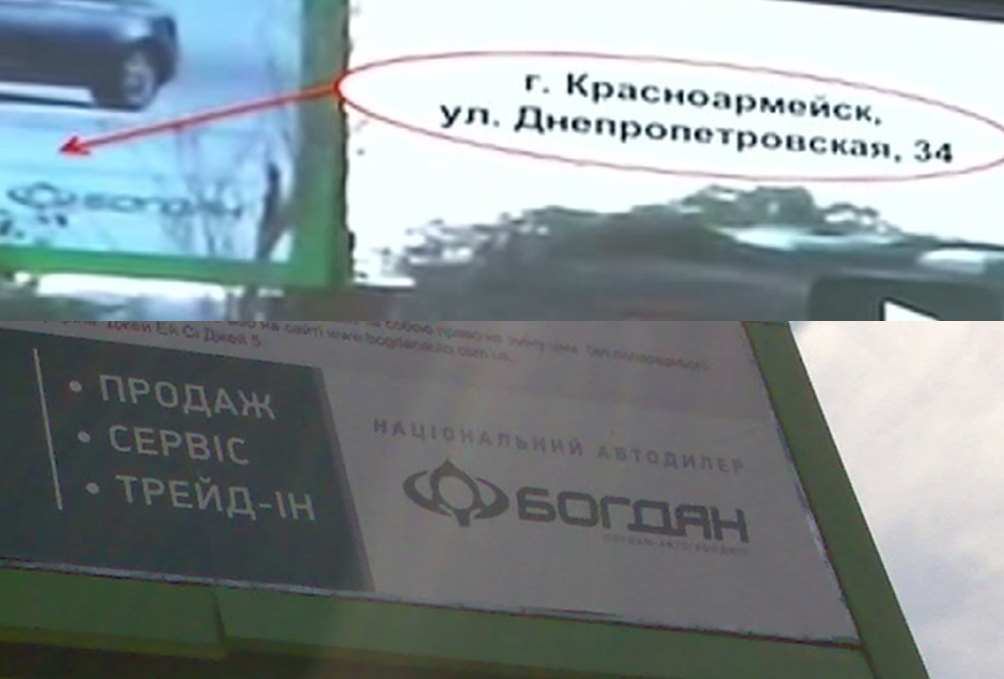
Top – Image from the Russian MoD presentation, Bottom – Photograph taken by a Luhansk local showing the actual caption on the sign
The Russian Ministry of Defence also presented satellite imagery, claiming to show various locations on and before the date of the incident. Imagery presented by the Russian Ministry of Defence of a Ukrainian air base, supposedly from July 14 and July 17, was proven by Bellingcat to have been captured weeks earlier. Key features visible in Digital Globe imagery captured on July 17 2014 showed significant differences from the Russian Ministry of Defence imagery they claimed was from the same period, for example an area of trees visible in the Russian MoD imagery that had been removed by July 2014:
The Russian MoD satellite imagery had also been edited, as research by Bellingcat and, later, Catherine Dill, Jeffrey Lewis, Melissa Hanham and David Schmerler from the Middlebury Institute of International Studies at Monterey published on the Arms Control Wonk website showed. The Arms Control Wonk team used Tungstène, a suite of forensic software tools, to examine the images, and came to the conclusion that the images had been “so heavily manipulated that it lacks any credibility as evidence”. Just a few days after MH17 had been shot down killing 298 people the Russian MoD was already presenting fake satellite images in an attempt to shift blame to another country.
The Russian MoD also made claims based on radar imagery, stating MH17 had changed course significantly, radar data showed an aircraft close to MH17 just after it was shot down, and radar data showed an aircraft approaching MH17 before it was shot down:
“Russian system of air control detected the Ukrainian Air Force aircraft, purposed Su-25, moving upwards toward to the Malaysian Boeing-777. The distance between aircrafts was 3-5 kilometers.”
After the press conference the Russian MoD failed to produce the radar data for the Dutch Safety Board (DSB) investigation and criminal investigation by the Joint Investigation Team (JIT), claiming they no longer had a copy of the data. In a bizarre turn of events, two years later, days before the JIT gave a September 28 2016 press conference explaining their findings so far, the Russians claimed to have rediscovered this missing radar data, and presented it on September 26, in an obvious attempt to undermine the JIT’s September 28 press conference.
At this press conference they presented conclusions that directly contradicted their earlier claims. MH17 didn’t drastically change course, there was no aircraft approaching MH17, in fact there was no object anywhere near MH17, and now the object that appeared on the radar data after MH17 was shot down was part of the aircraft picked up on radar as it broke away. This was all based on exactly the same data they presented on July 21 2014, but now they made entirely different conclusions, a clear indication that they were lying in at least one of those press conferences.
Ukraine
The MH17 case led to an increased interest in the conflict in Ukraine, and the open source material being produced from the conflict. One question that came under close scrutiny was the claim by Russia that the allegations they were providing material support to the separatists, and even sending over Russian soldiers and equipment, were false. In the case of MH17 it was possible to track the Buk missile launcher used in the attack back to Russia’s 53rd air defence bridge in Kursk, but this was just one example of Russian equipment being sent to Ukraine exposed by open source investigation. Russian blogger Askai707 wrote a number of in-depth investigations clearly demonstrating the presence of Russian vehicles and soldiers in Ukraine. In Russia’s 6th Tank Brigade: The Dead, the Captured, and the Destroyed Tanks (part 1, and part 2) Askai707 identified multiple Russian soldiers (and their equipment) captured and killed in fighting in Ukraine, just one of the articles where he demonstrated clear evidence of Russian soldiers, their vehicles, and their equipment being sent to Ukraine:
The VICE News documentary, Selfie Soldiers, based partly on an investigation in the Atlantic Council’s Hiding in Plain Sight report, showed Simon Ostrovsky tracking a Russian soldier’s movement from Russia to Ukraine, and back again, using the solider’s own social media posts, making one of the strongest cases possible that a serving Russian soldier had been sent to Ukraine to fight:
Russia’s involvement in the conflict was not only limited to sending over Russian equipment and troops to fight in Ukraine. Bellingcat’s investigation into over 100 crater sites in Ukraine indicated the attacks originated not from separatists positions inside Ukraine, but from artillery positions inside Russia, with thousands of munitions fired from Russia into Ukraine during the summer of 2014:
Syria
The conflict in Ukraine is not the only conflict Russia has been caught lying about repeatedly. During the first days of Russia’s air campaign in Syria the Russian MoD posted videos online claiming to show ISIS targets being destroyed in airstrikes. By geolocating the videos, and comparing those locations to the Russian MoD’s own maps, it was possible to establish in the vast majority of cases the Russian MoD was lying about the videos being filmed in ISIS territory. Bellingcat’s investigation concluded:
- Only nine of the 60 videos published by the Russian MoD at the time of publication could not be geolocated and verified
- In all cases except one where the claimed location was the actual location, ISIS presence in that area was not identified
- In the cases where the claimed location mismatched the actual location, no ISIS presence exists in the area that was targeted
These conclusions are based purely on the Russian MoD’s own videos, and their own map of who controlled what in Syria at the time of bombing. The Russian MoD response was to at first change the language used to describe to target to more generic terms like “fighter” or “terrorist” rather than naming a specific group, then to move from describing locations as in or near to towns and cities, to the governorate of Syria the attack took place in.
Misidentifying the group being bombed was not the only problem with Russia’s claims. In some examples, locations described as a specific type of structure or building turned out to be something quite different. In December 2015 the Russian MoD published the following video on their YouTube, described as the bombing of an oil refinery:
In fact, the location bombed was Al-Khafsa water treatment facility, not an oil refinery as claimed:
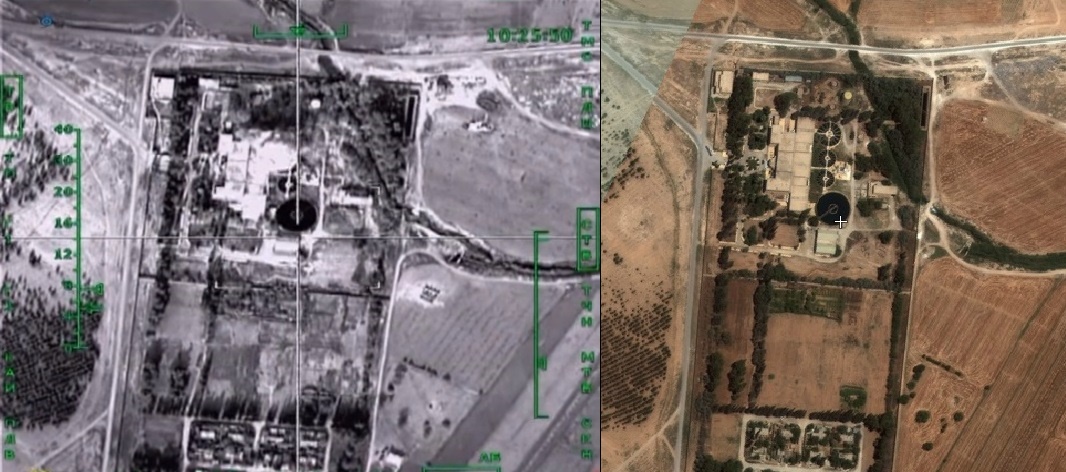
The left image is a still from the footage released by the Russian Ministry of Defence; the image on the right is Microsoft satellite imagery showing the same location. Coordinates: 36°10’37″N 38°2’30″E
As Russia’s bombing of Syria continued, allegations surfaced of hospitals, mosques, and schools being bombed by Russia. In response to some of these allegations, the Russian MoD held press conferences where they presented evidence they claimed showed the alleged attacks did not occur. However, open source analysis of these claims revealed the truth, that the Russian MoD was presenting evidence that was deliberately misleading.
On October 1st 2015 reports of Russian airstrikes hitting a mosque in the town of Jisr al-Shughur in Idlib began appearing online. These allegations were accompanied by videos and photos showing the mosque bombed, but the Russian MoD claimed in an October 30th press conference that these allegations were untrue.
As part of their presentation, they displayed aerial imagery of the town, showing a mosque on the west side of town, which showed no apparent damage. Evidence, they claimed, that the attack did not occur:
There was one major problem with the Russian MoD claim; this was not the mosque locals claimed had been bombed and featured in footage published online. The Russian MoD has simply lied about which mosque was bombed, and used an image of this different mosque as evidence that a completely different mosque wasn’t bombed.
In another incident, Russia was accused of bombing a hospital in the town of Sarmin, and in this case the moment the bomb struck was caught on camera by a member of the White Helmets:
Again, Russia denied responsibility, and presented aerial imagery that showed the area undamaged:
RT covered the Russian response, which included their own geolocation of the attack site:
Unlike the mosque bombing, Russia was in fact telling the truth about the location, but this time they were telling another lie. A Bellingcat investigation established that damage visible in footage from the aftermath of the attack was not visible on the Russian aerial imagery. Structures, walls, and poles that were completely destroyed in footage from the aftermath of the attack were shown still standing in the Russian MoD imagery, clear evidence the Russian MoD was using aerial imagery from before the attack as evidence the attack didn’t occur at all:
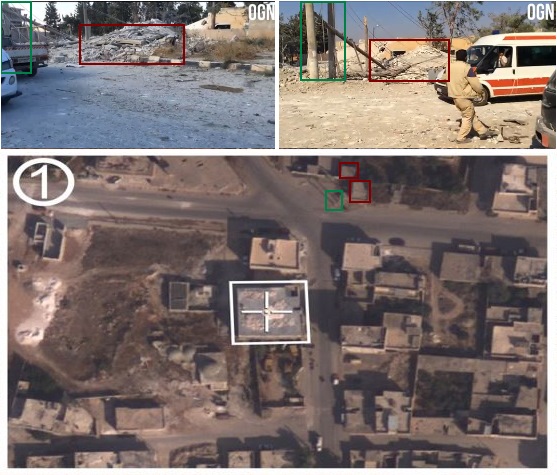
Structures destroyed in the bombing are undamaged in the Russian MoD aerial imagery they claim was captured after the attack
This wasn’t the only time the Russian MoD lied about a hospital bombing. Between September 28 2016 to October 3 2016 M10 hospital was damaged in three air attacks, with the October 3 bombing causing a significant amount of damage to the main hospital building. The moment of the October 3 2016 bombing was captured on CCTV cameras, clearly showing the moment of impact:
The impact side of the bombing showed a impact massive crater on the east side of the main hospital building:
The Russian MoD yet again gave another press conference where they claimed their imagery proved nothing had happened:
“No changes to the facility can be observed on another image taken on October 11, or after the alleged air strike. This fact proves that all accusations of indiscriminate strikes voiced by some alleged eyewitnesses turn out to be mere fakes.”
Aside from the wealth of evidence showing the attacks took place, there are in fact differences in the imagery provided by the Russian MoD:
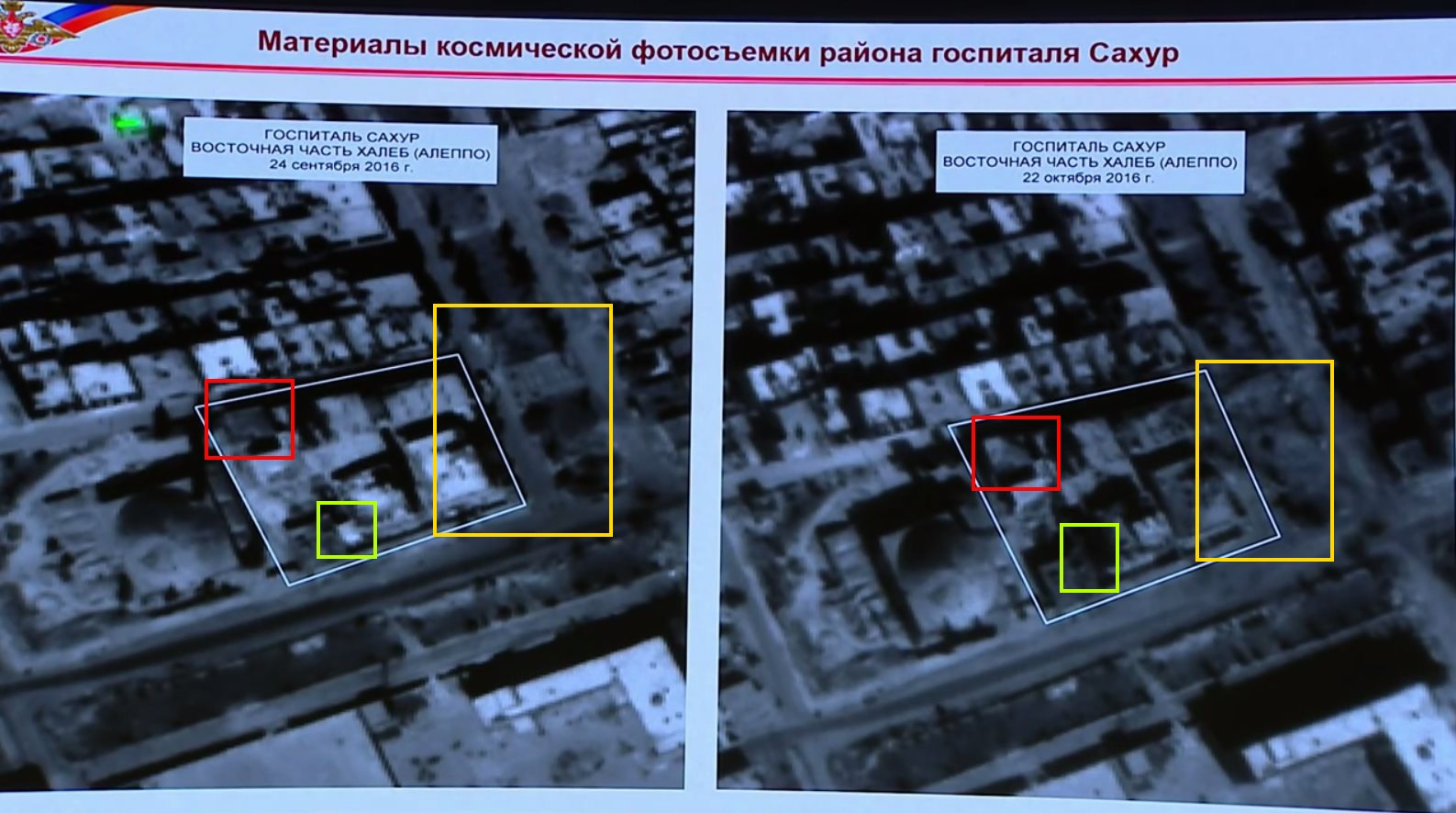
Red – A partly collapsed roof, Green – A collapse roof, Yellow – Damage to the road from the bombing
The damage is more clearly visible on Google Earth satellite imagery of the location taken before and after the bombings occurred:
Unlike in previous examples where the Russian MoD lied about the location or date, this time they were lying about what the viewers own eyes could see.
Aside from lying about bombing mosques and hospitals, the Russian MoD also lied about the type of munitions it was using in Syria. Following accusations of cluster munition use from various NGOs, Igor Konashenkov, a spokesman for the Russian military put out a statement deny the allegations, stating that “Russian aviation does not use them” and “there are no such weapons at the Russian air base in Syria”.
Thanks to Russian media organisations, this was proven to be totally untrue in an investigation by the Conflict Intelligence Team. At the time, the Russian MoD had invited various media organisations to their airbase in Syria, and by carefully examining these images it was possible to identify not only cluster bombs at Russia’s airbase in Syria, but Russian aircraft armed with cluster bombs.
The Conflict Intelligence Team discovered the deception of the Russian government can even be exposed at the very highest level. When Vladimir Putin was being interviewed by Oliver Stone Putin showed Oliver Stone footage he claimed showed Russian forces attacking ISIS in Syria. CITeam discovered was the footage was in fact US footage from Afghanistan:
Chemical Weapons
Before Russia was bombing Syria and fighting a war in Ukraine, and lying about it, the Russian government was already getting caught lying about another subject, the use of the chemical weapons by the Syrian government, a practice it continued once it started bombing Syria.
Following the August 21st 2013 Sarin attacks in Damascus, the initial Russian reaction was to denounce the “biased regional media’s….aggressive information attack, laying all the responsibility on the government”, with Russian Foreign Ministry spokesman, Aleksandr Lukashevich claiming a “homemade rocket with a poisonous substance that has not been identified yet – one similar to the rocket used by terrorists on March 19 in Khan al-Assal – was fired early on August 21 [at Damascus suburbs] from a position occupied by the insurgents.” Already there was an issue with this simple claim. Two types of rocket had been used on August 21, documented both in open sources, and by the United Nations Mission to Investigate Allegations of the Use of Chemical Weapons in the Syrian Arab Republic investigation into the August 21 attacks. One type of rocket used, the Volcano rocket used by government forces, could have passed for a homemade munition, but the second type, an M14 140mm artillery rocket, was a munition built by the Soviet Union, and could be in no way described as homemade.
More new evidence is starting to emerge that this criminal act was clearly provocative. On the internet, in particular, reports are circulating that news of the incident carrying accusations against government troops was published several hours before the so-called attack. So, this was a pre-planned action.
When it came to the April 4th 2017 Khan Sheikhoun attack, Russia kept things some what simpler. On April 5th 2017 Sputnik quoted Russian Defense Ministry spokesman Maj. Gen. Igor Konashenkov as stating that Syrian aircraft conducted an airstrike around “11.30 to 12.30, local time, [8.30 to 9.30 GMT]” on a chemical weapons warehouse. According to Sputnik, Konashenkov stated the target was “in the eastern outskirts of Khan Shaykhun on a large warehouse of ammunition of terrorists and the mass of military equipment.”In addition, Sputnik reported that:
“Konashenkov said that from this warehouse, chemical weapons’ ammunition was delivered to Iraq by militants.
Konashenkov added that there were workshops for manufacturing bombs, stuffed with poisonous substances, on the territory of this warehouse. He noted that these munitions with toxic substances were also used by militants in Syria’s Aleppo.”
The first problem with this claim is the initial reports of the chemical attack, including images of the victims and footage of the bombing raid that occurred during the chemical attack, appeared online 3 hours before the time the Russian MoD gave for the warehouse bombing. The second problem was the Russian MoD didn’t provide a location of this warehouse, and no such structure was reported as bombed at any point. Zero evidence existed for a chemical weapons warehouse being bombed, and the OPCW-UN Joint Investigative Mechanism report on the attack said the location “appears to be a building used by the Syrian Civil Defence as a medical point in the eastern outskirts of Khan Shaykhun,” adding “Apart from the fact that victims of the sarin incident earlier that morning had been treated there, the Mechanism did not link that location to the release of sarin.”
Russia’s Response
Even in the Russian government’s response to the work of Bellingcat that exposed their lies, they ended up telling yet another lie, and then compounded that by telling another lie. On April 6th 2016 Foreign Ministry spokesperson Maria Zakharova made the following statement about Bellingcat:
Bellingcat as an instrument to divert attention from investigating the tragedy of the Malaysian Boeing over Ukraine
We took note of an interview with Bellingcat representatives for the BBC in which they sarcastically spoke about some “trolling” on the part of the Ministry of Defence and the Foreign Ministry of Russia, for allegedly attacking them.
I would simply like to recall that we do not attack anyone, but rather, give our unbiased assessment of the work of both this group and those who use its materials as reliable information.
We understand the purpose of this group’s activities. Acting jointly with the current Ukrainian authorities, they continue to use all possible “fakes,” to create quasi-evidence to blame Russia. Why do we take this position and on what is it based? Even now the commission (investigating the circumstances of the Boeing tragedy over the territory of Ukraine) prefers to ignore Russia’s reasoning, which is corroborated by facts and evidence, in particular by tests and experiments. The commission ignores it to the extent that it makes no reply to this reasoning, while at the same time passing off these “fakes” for the hundredth time as proof or integrated evidence, even when this information has been debunked, and not only by Russia.
At present, we have information,that leads us to believe that loyal and handy witnesses in this case are being selected and presumably trained. This begs the question: why is all this being done? The aim is once again to give the global community fabricated proof of Russia’s aggression. This seems blasphemous in this case, because people died there and their families want to know the truth. One may endlessly combine all these invented stories and collect evidence allegedly found on social media sites and at the same time ignore the results of experiments, including those provided by Russia. All this can be done only if you neglect to consider one thing: this case is not just an information campaign, it involves human lives, the destinies of the victims’ families, who definitely want to know the truth.
Bellingcat contacted the Russian Ministry of Foreign Affairs, asking for evidence to support the claim “Acting jointly with the current Ukrainian authorities, they continue to use all possible “fakes,” to create quasi-evidence to blame Russia”, as this claim was completely untrue.
The Russian Ministry of Foreign Affairs eventually addressed our request and sent a document with what it claimed was evidence to support its case:
Dear Mr. Higgins,
Your persistence would find a better use if you did put some effort to performing your self-proclaimed Internet sleuth role. We, on our part, would like to note that the Ministry of Defense of the Russian Federation has already provided perfectly detailed and clear examples of your falsifications. While we completely agree with the points made by our colleagues, we would like to add a few more facts.
It is obvious for anyone that your priority is creating an impression among the public that Russian troops were present at an alleged launch site of the missile that hit the Malaysian plane on July 17, 2014 in the skies over Ukraine. However, you have failed to confirm this. As of today, no one has provided actual proof of Russian Armed Forces’ presence in Ukraine. This is simply impossible because there are no Russian troops there, and there never were. The social network data as well as different Internet posts that you use cannot, under any circumstances, be taken as actual proof of Russia’s involvement in the conflict in Ukraine.
Now let’s see the specific examples.
The document then went on to describe some of the ways the Russian Ministry of Foreign Affairs believed Bellingcat producing fakes (although failed to address the claims Bellingcat was working with “the current Ukrainian authorities”). The claims were filled with errors and could be clearly shown to be incorrect, but as the Bellingcat team reviewed the document it became clear the entire document, aside from the opening paragraphs, had been plagiarised from two LiveJournal blog posts from the user “albert-lex.” The first of these blog posts, “Belling the Cat,” is from October 2015, and the second, “Anti-Russian experts on NATO’s Hook,” is from March 2016. Paragraphs and sentences had been copied and restructured, but some cases were more blatant. For example:
MFA Letter: В качестве доказательств – десятки фотографий из социальных сетей, на которых изображены какие-то солдаты с размытыми лицами, боевая техника с плохо читаемыми бортовыми номерами, к тому же непонятно где находящаяся.
Translation – The proof presented is dozens of photos taken from social networks showing some soldiers with blurry faces and military vehicles with poorly visible side numbers in unknown locations.
Albert-Lex: В качестве доказательств – десятки фотографий из социальных сетей, на которых изображены какие-то солдаты с размытыми лицами, боевой техники с плохо читаемыми бортовыми номерами, к тому же непонятно где находящейся.
The plagiarism could not be more obvious here. The only difference between the two texts is that the MFA letter used an en dash (double-hyphen turned into a longer dash in MS Word), while the Albet-Lex post only used a single hyphen.
The Russian Ministry of Foreign Affairs made no reference to these blog posts, making this a clear case of plagiarism, where “their” evidence was actually the incorrect claims of a Russian blogger.
Based on Russia’s past relationship with the truth the Russian Embassy to the Netherlands’ suggestion “Russia’s Strength is in Truth” is probably the least appropriate branding they could have come up with, or a very dark joke.
